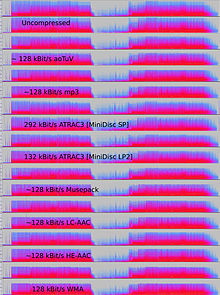Lossy

In the late 1980s, digital images became more common, and standards for lossless image compression emerged. In the early 1990s, lossy compression methods began to be widely used. In these schemes, some loss of information is accepted as dropping nonessential detail can save storage space. There is a corresponding trade-off between preserving information and reducing size. Lossy data compression schemes are designed by research on how people perceive the data in question. For example, the human eye is more sensitive to subtle variations in luminance than it is to the variations in color. JPEG image compression works in part by rounding off nonessential bits of information. A number of popular compression formats exploit these perceptual differences, including psychoacoustics for sound, and psychovisuals for images and video.
Most forms of lossy compression are based on transform coding, especially the discrete cosine transform (DCT). It was first proposed in 1972 by Nasir Ahmed, who then developed a working algorithm with T. Natarajan and K. R. Rao in 1973, before introducing it in January 1974. DCT is the most widely used lossy compression method, and is used in multimedia formats for images (such as JPEG and HEIF), video (such as MPEG, AVC and HEVC) and audio (such as MP3, AAC and Vorbis).
Lossy image compression is used in digital cameras, to increase storage capacities. Similarly, DVDs, Blu-ray and streaming video use lossy video coding formats. Lossy compression is extensively used in video.
In lossy audio compression, methods of psychoacoustics are used to remove non-audible (or less audible) components of the audio signal. Compression of human speech is often performed with even more specialized techniques; speech coding is distinguished as a separate discipline from general-purpose audio compression. Speech coding is used in internet telephony, for example, audio compression is used for CD ripping and is decoded by the audio players.
Lossy compression can cause generation loss.
Comments
Post a Comment